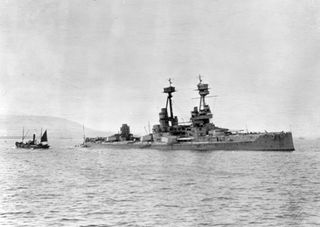Archaeologists Map Famed Shipwrecks and War Graves in Scotland

A sheltered body of water in Scotland's Orkney Islands, Scapa Flow is calm on its surface. But underwater, the seabed is full of historic shipwrecks and war graves where hundreds of sailors were killed.
Using sonar and underwater robots, marine archaeologists have just completed a mission to map 10 of those wrecks in detail, including the remaining shipwrecks of the abandoned German High Seas Fleet from World War I. The researchers' goal is to make digital copies of the seabed sites and track the physical condition of the ships.
"They tell such a huge story about really important events throughout history," Sandra Henry, a marine archaeologist with the Orkney Research Center for Archaeology, or ORCA, who led the project, told Live Science. "So in a way, we're trying to bring the story of these wreck sites to the surface."
Scapa Flow is a popular spot for divers, particularly for those who want to explore the High Seas Fleet, which was the battle fleet of the German Imperial Navy. [Sunken Treasures: The Curious Science of 7 Famous Shipwrecks]

With the end of World War I, the defeated German Navy had its fleet interned at Scapa Flow. The Treaty of Versailles was supposed to decide the fate of the ships. But before the peace agreement was signed, the German commander gave the order to scuttle the entire fleet on June 21, 1919, to prevent the warships from being seized. The sailors opened the portholes, smashed water pipes and abandoned the ships as they started to sink.
The event was the greatest loss of warships in history, scientists say. A letter from a young British officer, published by BBC News last year, captured the drama of the day: "The water was one mass of wreckage of every description, boats, carley floats, chairs, tables and human beings, and the 'Bayern' the largest German battleship, her bow reared vertically out of the water was in the act of crashing finally bottomwards, which she did a few seconds later, in a cloud of smoke bursting her boilers as she went." [Photos: British Warships from WWI and WWII Discovered Near Norway]
In total, 52 ships sank. Only seven ships remain on the seabed today. Most of the wrecks were salvaged in the decades that followed, though there are still some remains of the salvaged ships that never made it to the surface. (The gun turrets of the Bayern, for example, can still be seen in the seafloor mud.)
Sign up for the Live Science daily newsletter now
Get the world’s most fascinating discoveries delivered straight to your inbox.
In addition to the seven ships of the German fleet, the researchers also collected new data on three British war graves, where diving is usually forbidden: HMS Vanguard, HMS Hampshire and HMS Royal Oak.
HMS Vanguard was destroyed when a spark set off a series of explosions on July 9, 1917. Of the 845 people on board, only two survived. HMS Hampshire struck a mine laid by the German navy on the west coast of Orkney (technically just outside of Scapa Flow) on June 6, 1916. That ship had been carrying British military commander Lord Kitchener on a diplomatic mission to Russia. He was among the 737 dead. HMS Royal Oak was torpedoed by a German U-boat during World War II, on Oct. 14, 1939, and 833 were killed, according to historical reports.
Apart from the Vanguard, whose wreckage is quite scattered due to the nature of the explosions, the other nine wreck sites are largely intact, Henry said. Her team gathered data with remotely operated vehicles (ROVs) and geophysical tools like a multibeam echosounder, which sends a fan of sound waves to bounce off the seafloor to map the underwater landscape.
The researchers hope that by comparing their images with previous data, they'll be able to see how the wreck sites are changing, moving or beginning to collapse. They also want to help establish a baseline view of the site for future study.
"Divers are telling us these wrecks are changing drastically," Henry said. "It's quite important for us to understand their current condition and how they're deteriorating over time."
There are no current plans to recover objects from the Scapa Flow wrecks; the goal is to preserve the sunken ships in their original position. Looting is another threat. Last year, two divers were reportedly fined £18,000 (U.S. $22,529) each for removing artifacts like a ship's telephone and lantern from the German wrecks.
Original article on Live Science.

Most Popular


